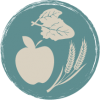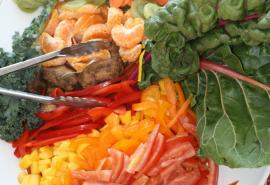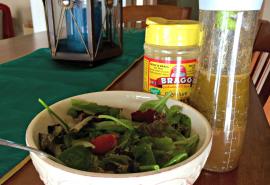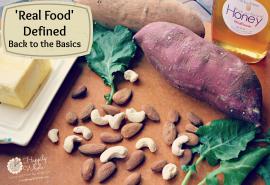As we continue on with our 30 Day Challenge, I want to add to your tool box steadily but without overwhelming you. There's so much to say and so little time! SO, bear with me and take one step at a time. Remember, this is YOUR 30 days. There's no benefit in perfection. Instead, look at this as a process. And, as with any process, you'll have some struggles and some successes along the way. I've even shared with you some of my self-sabotaging tendencies! (Here's where I shared...and I hope you completed your assignment, too!)
With all that said, to start the week off with a few more tangible tools in your box, I'm giving some snack suggestions and then covering a couple lists of common ingredients for you to look for (or avoid according to our Tips and Guidelines).
When it comes to convenient snacking and clean eating, the two ideas truly clash. Most convenience foods come in packaging and contain additives, chemicals, preservatives, GMOs, food dyes and more (all of which we want to AVOID). That's why I wanted to give you a few ideas to look for in the store and also provide you with a list of common ingredients to look for on labels (YES, we all need to read labels!).
The photos here show a few of the items I like to snack on. Each of them has high nutritional density and NO processed ingredients. I'm showing chick peas (aka garbanzo beans) because I love to soak and simply eat them or roast them and eat them like THIS RECIPE or you can make your own homemade hummus with them. The eggs are hardboiled and I'll sometimes grab one for a snack or I often include one at lunchtime for some solid protein. Raw nuts and seeds offer good fats, fiber and protein. So, I sprinkle them on salads or simply eat a small handful when I'm getting those mid-afternoon hunger pangs. Roasting nuts can also make a delicious snack, as in this recipe for roasted pecans. These Lara Bars are about the least processed I can find at a typical grocery store. Although there are others at health food stores. Or BETTER YET, make your own, like these delicious ones: homemade bars: Dark Chocolate, Toasted Seed-n-Nut Bars or these: Homemade Granola Bars, Gluten Free and GREAT! A piece of raw cheese (permissible in moderation from our list) can be eaten alone or I love to combine that with a piece of fruit. Combining fruit and a protein makes a great snack that nourishes and keeps the blood sugar stable. I also want to mention these freeze dried peas I found at Target. The ONLY ingredient on the label is the PEAS! Yes! I love that. It offers a nice little crunch and peas actually contain more protein than you might think so they make a perfect snack to munch on.
Now these packaged snacks might be a bit less conventional in flavor and texture if you're not used to foods made with raw and/or sprouted ingredients. But, that's exactly what I love about these two brand names! The Seedsters clusters a uniquely nourishing collection of seeds. The Go Raw brand offers tiny round 'cookies' and a several granola varieties. You've got to give them a try to see what you think! These are some of my favorite flavors.
And now, on to a simple, abridged ingredient list that might help you as you look at those labels. This is by far not everything you'll read. But these will give you some general ideas, especially if you're a beginner to reading labels. This first list of grains is not complete, but these are the most common ones you'll find in a general grocery store and some of the most likely to try and dupe the unassuming shopper. Remember, we are avoiding refined flours and sugars and when we DO eat grains, we are aiming for the ancient ones or sprouted grains (see the LISTS POST if you need a refersher on that).
Common Grains
Common Sugars*
Be on the lookout for just about any term with the word “syrup” or “cane” or ending in the letters “-ose” – those are all pretty much refined (white) sugars that are best consumed only in great moderation and, during the 30 Day Challenge, we are staying away completely if possible ( and afterwards, it's best if not consumed every meal or even every day)!
| Ingredient Name | What It Really Means |
|---|---|
| Brown Rice Syrup | Refined sugar |
| Cane Juice / Evaporated Cane Juice | Refined sugar |
| Raw Sugar | Refined sugar |
| Corn Syrup / Corn Syrup Solids | Refined sugar |
| High Fructose Corn Syrup | Refined sugar |
| Cane Sugar | Refined sugar |
| Invert Sugar | Refined sugar |
| Rice Bran Syrup | Refined sugar |
| Tapioca Syrup | Refined sugar |
| Dried Cane Syrup | Refined sugar |
| Dextrose / Fructose / Sucrose | Refined sugar |
| Agave Nectar | Refined sugar (in most cases) |
| Stevia | It depends, the leaf itself is obviously natural, but the refined powdery stuff – not so much. Some liquid versions are better |
|
Grape Juice Concentrate / Pear Juice Concentrate/fruit concentrates |
Depends on how refined it is – this one is a gray area, but no matter what it’s still a “sugar”. Just be weary. |
| Honey | This is still “sugar” but does contain nutrients. I encourage RAW and local if possible. |
| Pure Maple Syrup | This is still “sugar” but does contain some trace nutrients and is acceptable in small amounts. |
*The important thing here is that MANY products will use 2 or 3 or even 4 different types of sugar so just because you see “cane juice” listed as the 4th item used on the ingredient list – don’t stop there. Keep reading because chances are the product also contains brown rice syrup, honey and possibly some others. If you added all the sweeteners together it could end up as one of the top 3 ingredients (what the product contains the most of).Breaking up the sweeteners like that is no accident.
Artificial Ingredients-Avoid
| Ingredient Name | What It Really Means |
|---|---|
| Aspartame | Artificial Sweetener |
| Sucralose | Artificial Sweetener |
| Saccharin | Artificial Sweetener |
| Acesulfame K / Acesulfame Potassium | Artificial Sweetener |
| Neotame | Artificial Sweetener |
| Blue 1 | Artificial Color |
| Blue 2 | Artificial Color |
| Green 3 | Artificial Color |
| Red 3 | Artificial Color |
| Red 40 | Artificial Color |
| Yellow 5 | Artificial Color |
| Yellow 6 | Artificial Color |
| FD&C Lakes | Artificial Color |
| Citrus Red 2 | Artificial Color |
| Artificial Color | Artificial Color |
| Artificial Flavor | Who knows what this really is – just avoid it! |
Others Worth Mentioning
| Ingredient Name | What It Really Means |
|---|---|
| Partially Hydrogenated Soybean Oil | Trans fat (that’s likely GMO) |
| Partially Hydrogenated [Insert Type] Oil | Trans fat |






Comments